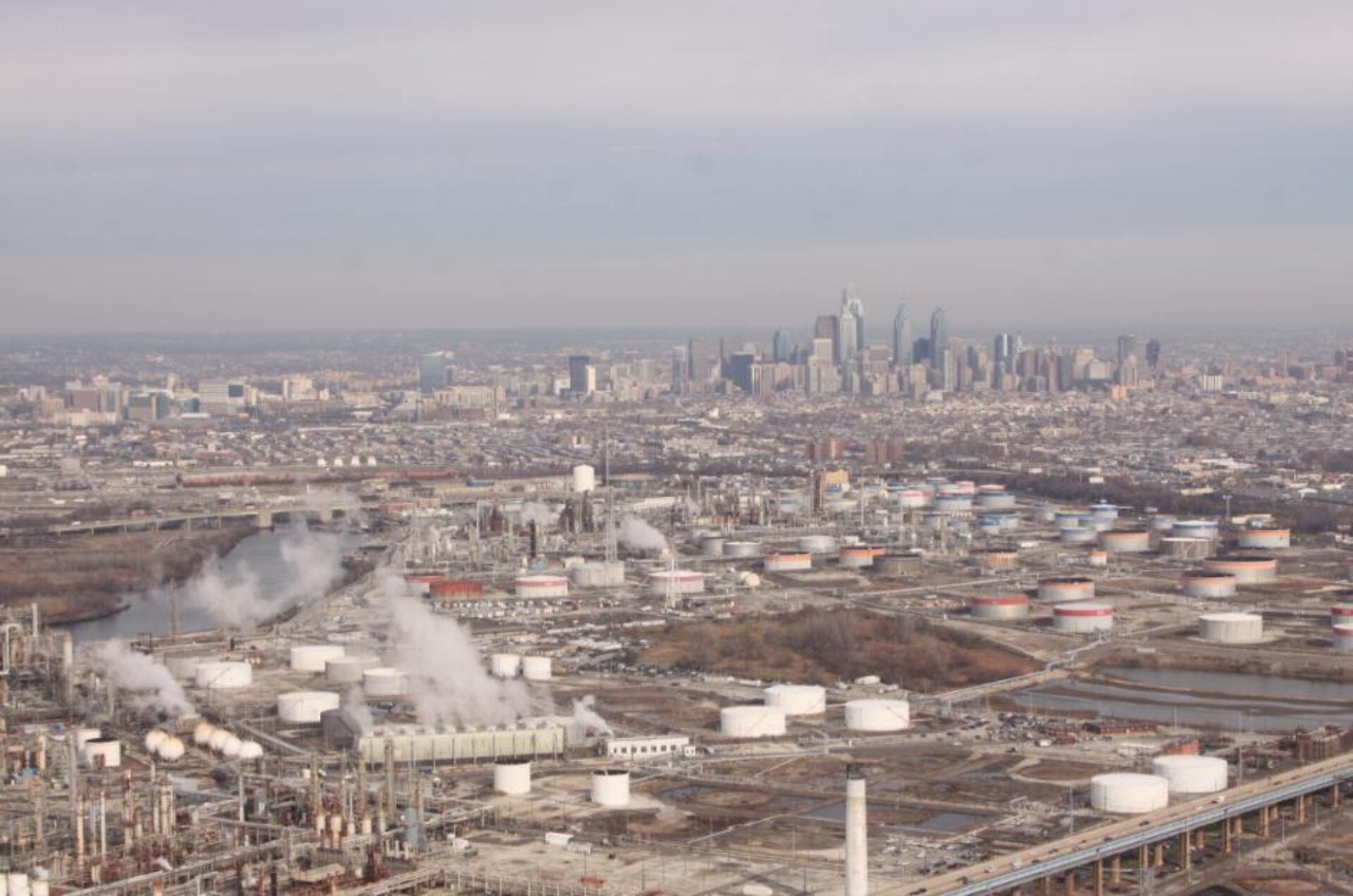
Tough Times for Philadelphia’s Local Refinery
It seems that Philly’s neighborhood refinery, since 1870, is stuck in a rut and looking for a way out. After initial plans to go public were postponed, the refinery’s owners are reportedly looking for buyers in the private equity market.
Philadelphia Energy Solutions LLC (PES)– a joint venture of the Carlyle Group, PES Equity (a subsidiary of Energy Transfer Partners) and members of PES’ management team – owns the sprawling refining complex in southwest Philly, the largest refining complex on the eastern seaboard.
The refining complex includes two refineries (Girard Point and Point Breeze) and a robust rail logistics operations. It has the capacity to process 330,000 barrels of oil per day into various refined products, for example, gasoline, diesel, and jet fuel. The logistics segment, primarily the North Yard Terminal, is the largest crude oil rail unloading terminal on the east coast. The refinery complex can also receive marine-based feedstock.
In December 2011, Sunoco sought to offload the refinery, which at times was losing up to $1 million per day. By July 2012, investors and politicians succeeded in resurrecting the plant under the PES banner, due to $500 million in capital infusions to upgrade the facility’s refining equipment and rail unloading facilities.
Under the new PES management, the refinery complex performed a turnaround, operating with positive margins, according to SEC filings. The timing seemed right to attract new investors.
PES LLC planned to create PES Inc. (or PECS, the prospective NY stock exchange symbol) as the parent holding company for two separate business segments, refining and logistics, in order to raise capital through a public offering. In September 2014, PES filed IPO paperwork with the SEC for its logistics segment, dubbed PES Logistics Partners, L.P. (PESL), targeting a $250 million raise. In February 2015, PES filed paperwork with the SEC indicating plans for an IPO of its broader business including refining (PESC), to raise $100 million. However, in August 2015, PES announced plans to postpone IPO plans due to unfavorable market conditions, namely the collapse in oil prices and corresponding tightening of capital markets. I am assuming both IPOs are being postponed.
Current market conditions aside, analysts were skeptical of the PES IPO offerings from the beginning. Observations included, for example:
- Refining is a margin-based business that is highly competitive and subject to the volatility of commodity and refined product price fluctuations. Operating efficiencies, reliability, product mix and product transport costs also critical. PES operates as a merchant refiner, putting it at a disadvantage to its integrated competitors that have more resources to weather downturns.
- There is stiff competition from nine refineries in the region, including Phillips 66 and American Refining Group.
- Comparing the three month period of Q1 2014 to Q1 2015, revenues to PES declined by almost $1 billion, though income increased by about $4 million in that time frame.
- The company’s valuation is aggressive, given the state of the energy industry.
- Dividend yield of $0.10/share is lower than comparable peer refiners with logistics operations, with the market likely to demand a higher yield coupled with a stock price drop.
In addition to these factors, PES felt one of its key competitive advantages was the ability to profit from the discount presented by U.S. shale-based oil. The company invested in equipment to maximize the oil shale value proposition, only to see the feedstock’s discount largely disappeared when global oil prices plummeted.
Early reports of PES’s search for a new, non-public buyer suggest the public market felt the company’s $1.3 billion valuation was too high, by about 50 percent. A $650 million valuation is near the $500 million in capital reportedly invested in upgrading the complex, painting a dim view for the company’s current investors.
UPDATE: Reuters reported on July 6th that PES had cut output by 10 percent due to low gasoline profit margins. This move is atypical for the summer driving season, when gasoline demand and prices usually rise prompting refineries to up production. However, the RBOB crack spreads – the profit margin realized between buying oil and selling refined gasoline – has been dropping, forcing many refineries on the east coast to cut production.
Christina Simeone
Kleinman Center Senior FellowChristina Simeone is a senior fellow at the Kleinman Center for Energy Policy and a doctoral student in advanced energy systems at the Colorado School of Mines and the National Renewable Energy Laboratory, a joint program.

